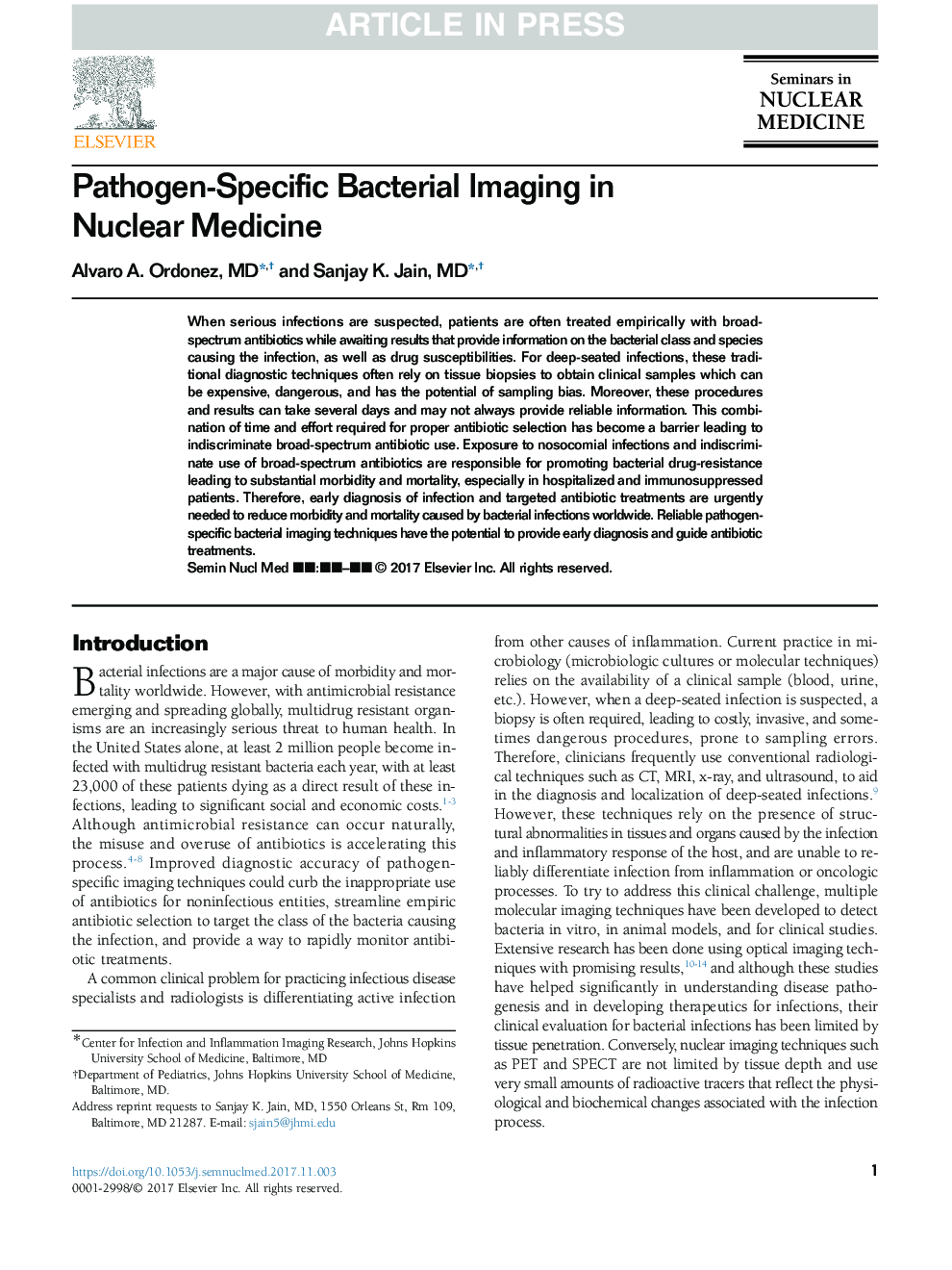| Article ID | Journal | Published Year | Pages | File Type |
|---|---|---|---|---|
| 8826191 | Seminars in Nuclear Medicine | 2018 | 13 Pages |
Abstract
When serious infections are suspected, patients are often treated empirically with broad-spectrum antibiotics while awaiting results that provide information on the bacterial class and species causing the infection, as well as drug susceptibilities. For deep-seated infections, these traditional diagnostic techniques often rely on tissue biopsies to obtain clinical samples which can be expensive, dangerous, and has the potential of sampling bias. Moreover, these procedures and results can take several days and may not always provide reliable information. This combination of time and effort required for proper antibiotic selection has become a barrier leading to indiscriminate broad-spectrum antibiotic use. Exposure to nosocomial infections and indiscriminate use of broad-spectrum antibiotics are responsible for promoting bacterial drug-resistance leading to substantial morbidity and mortality, especially in hospitalized and immunosuppressed patients. Therefore, early diagnosis of infection and targeted antibiotic treatments are urgently needed to reduce morbidity and mortality caused by bacterial infections worldwide. Reliable pathogen-specific bacterial imaging techniques have the potential to provide early diagnosis and guide antibiotic treatments.
Related Topics
Health Sciences
Medicine and Dentistry
Radiology and Imaging
Authors
Alvaro A. MD, Sanjay K. MD,
